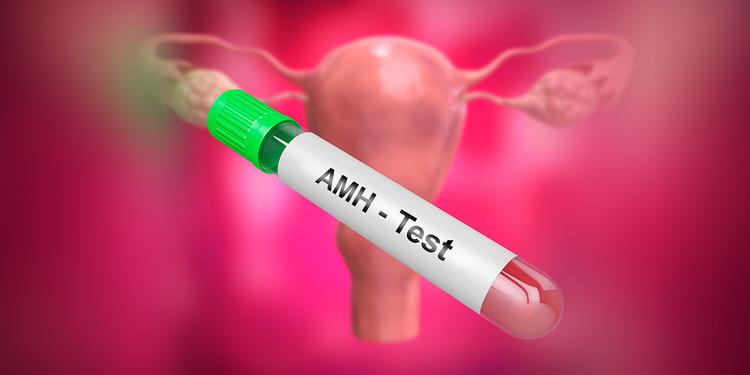Transvaginal ultrasound scan - A complete guide

Medically Reviewed By
Dr. Ragiinii Sharma
Written By Dr Divya Rohra
on Feb 15, 2022
Last Edit Made By Dr Divya Rohra
on Mar 18, 2024

A USG TVS scan stands for transvaginal ultrasound scan. The term transvaginal refers to anything inserted through the vagina. It is an ultrasonography test in which the probe is inserted through the vagina of the female. It is commonly used to detect abnormalities in the female reproductive tract, to confirm pregnancy and to ensure the well-being of the fetus. The scan results can assist your doctor in analyzing problems such as complications during pregnancy, conditions of the uterus or ovaries like fibroids or cancer. As ultrasound does not emit any harmful radiations, it is generally the preferred screening method during pregnancy.
[wptb id=7078]
Let's get into the details of USG TVS and how it is done.
In this Article
What exactly is a transvaginal ultrasound?
To understand a transvaginal ultrasound or USG TVS in detail, we first need to understand the principle behind an ultrasound test.
Conventional ultrasound
Conventional ultrasound is a routine radiological imaging procedure used to screen various internal body parts. The ultrasound transducer produces high-frequency sound waves. These sound waves strike various body organs and are reflected. These echoed sound waves are analyzed, forming an image on the display screen. This image is known as a sonogram. An ultrasound is also used to visualise moving images of internal body parts in real time.
A transvaginal ultrasound
The principle behind a transvaginal ultrasound is similar to the routine ultrasound, but the procedure is entirely different. A standard ultrasound is usually performed externally, whereas a transvaginal ultrasound is performed with the technician or radiologist inserting the ultrasound probe inside the vaginal canal. Internal organs can be observed more clearly because the probe is inserted two to three inches inside the vaginal canal.
How is a trans vaginal ultrasound helpful?
- A transvaginal ultrasound can provide detailed images of various female genito-urinary organs such as the vaginal cervix, uterus, urinary tract, fallopian tubes, and ovaries.
- It also looks for changes in the size, position, or shape of female reproductive organs such as the ovaries and uterus.
- Ovaries can develop cysts at times, and the transvaginal ultrasound can help detect them.
- It is helpful in determining the thickness of the urinary bladder walls.
- It is also used to assess the thickness of the uterine wall, including the myometrium or endometrium.
- It can help with early detection of pregnancy.
Why do I need a transvaginal Ultrasound?
A transvaginal ultrasound may be requested by a doctor when a patient exhibits symptoms such as:
- Excessive pelvic pain
- Spotting
- Infertility
- Bleeding after menopause
- Endometriosis
- Inflammation of the cervix
- The presence of symptoms of fibroids, cysts, or abnormal masses in the uterus or ovaries.
Pregnancy
The USG TVS proves to be very useful during pregnancy.
- During pregnancy, the scan is useful for monitoring the foetal heartbeat.
- It can also help determine the delivery date and understand the placenta's location and position.
- In females, a TVS scan also determines and checks for ectopic pregnancy.
- In high-risk pregnancies, this is usually done as a routine investigation for follow-up.
What is the procedure of a transvaginal ultrasound?
The procedure of TVS USG is as follows:
- The patient is first made to lie on the examination table and is asked to undress from the waist down and covered with a sheet.
- A transducer is inserted into the vagina by a skilled technician. This transducer is covered in gel, which serves as a lubricant, and a sheath, generally made of latex, is also placed on top of the transducer.
- A little discomfort may be expected as the probe passes into your vagina, but it generally lasts for a short time.
- The transducer sends sound waves which produce an echo when they hit the different organs and are reflected back.
- This transducer is rotated at various angles to obtain more and better image sections, capturing images of the entire area to be examined.
The doctor and technician in real-time can view the images. The entire procedure takes very little time and can be completed in 15-30 minutes.
Results of a transvaginal ultrasound?
It is critical to understand and distinguish any abnormality from the typical structure when interpreting the results of a TVS USG scan. As the scan provides real-time imaging, the doctor or radiologist can look for abnormalities then and there and provide the reports quickly.
Takeaway
Transvaginal ultrasound is a sophisticated procedure that helps in the early diagnosis of pregnancy and in the internal screening of the uterus. It provides a detailed picture of the pelvic region and helps detect tumors, fibroids, and cysts without any harmful radiation.
FAQs?
Is a transvaginal ultrasound painful?
The procedure of a transvaginal ultrasound is generally not painful. It is slightly more invasive than the standard ultrasound. Females may experience minor discomfort when the transducer is inserted, but this subsides after a short time.
Is a transvaginal ultrasound safe during pregnancy?
During pregnancy, the transvaginal ultrasound procedure is entirely safe. The transducer is inserted into the vagina and it does not affect the foetus's health in any way. Another critical aspect of a transvaginal ultrasound is that no radiation is involved, making it even safer during pregnancy.
Where can I get a transvaginal ultrasound done?
Transvaginal ultrasound is available at several hospitals, clinics, and diagnostic laboratories. Redcliffe offers a high-quality diagnostic facility for transvaginal ultrasound screening procedures. With a simple online booking system, trusted staff, and FDA-approved technologies, Redcliffe is a leading name in the field of diagnostics. You may visit our website or call on our helpline number to book a TVS USG easily.



![Double Marker Test - Price, Normal Range, & Results [2024]](/myhealth/_next/image/?url=https%3A%2F%2Fmyhealth-redcliffelabs.redcliffelabs.com%2Fmedia%2Fblogcard-images%2F3521%2Fe565bbca-17cd-4228-8c1a-514cc9aebb07.jpeg&w=750&q=75)